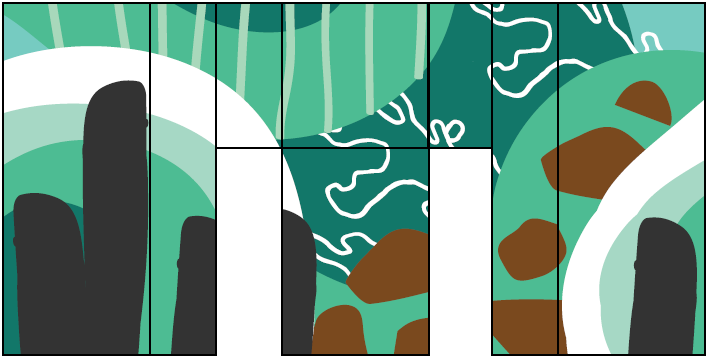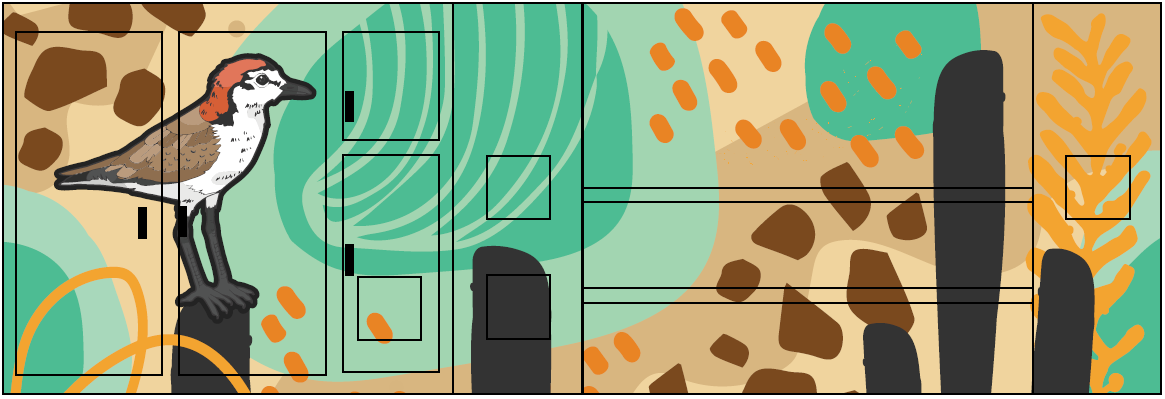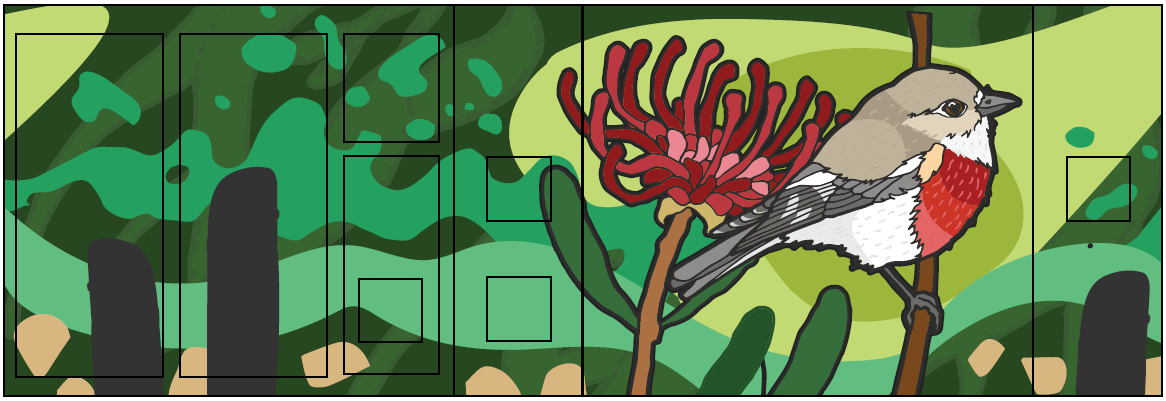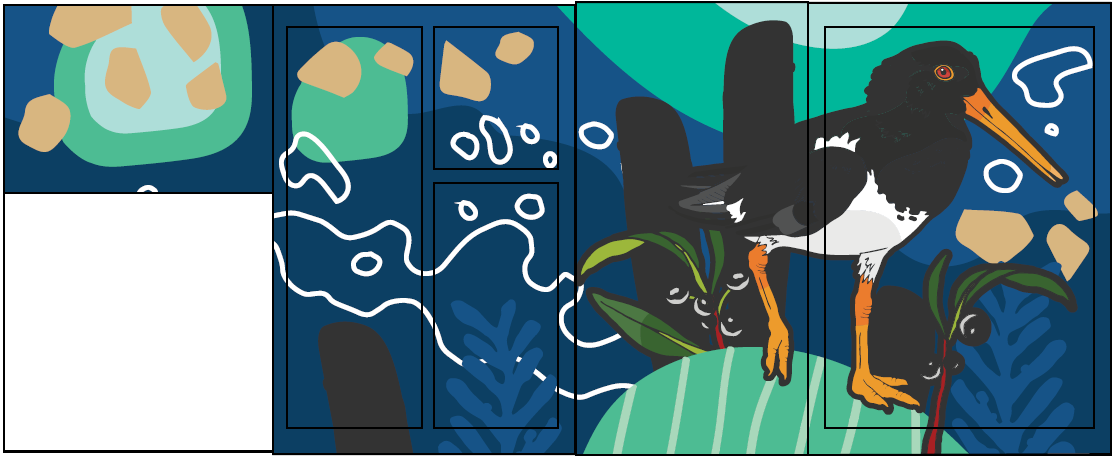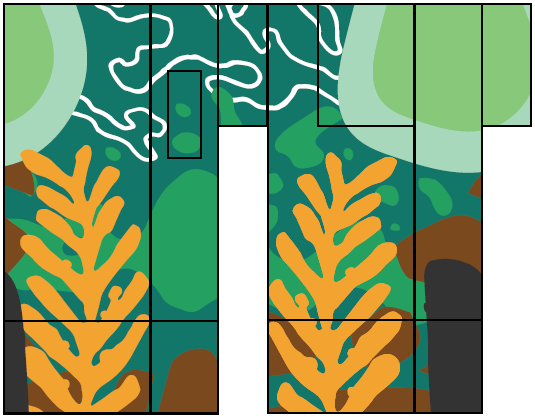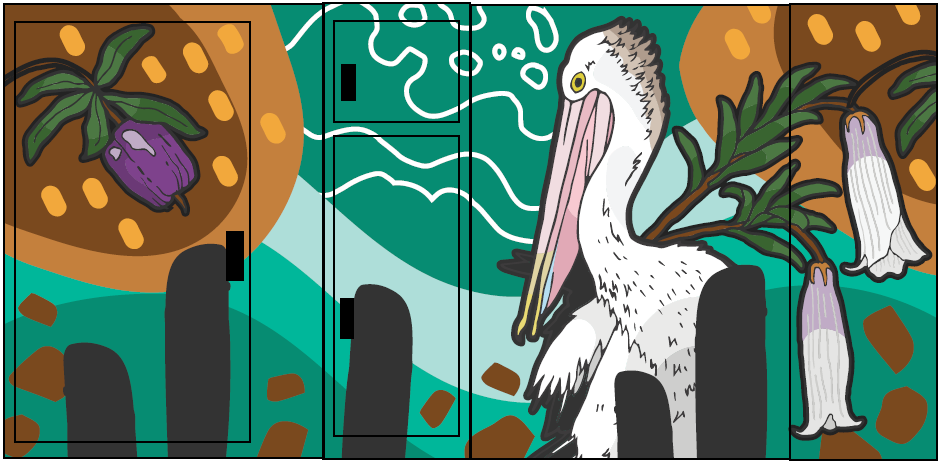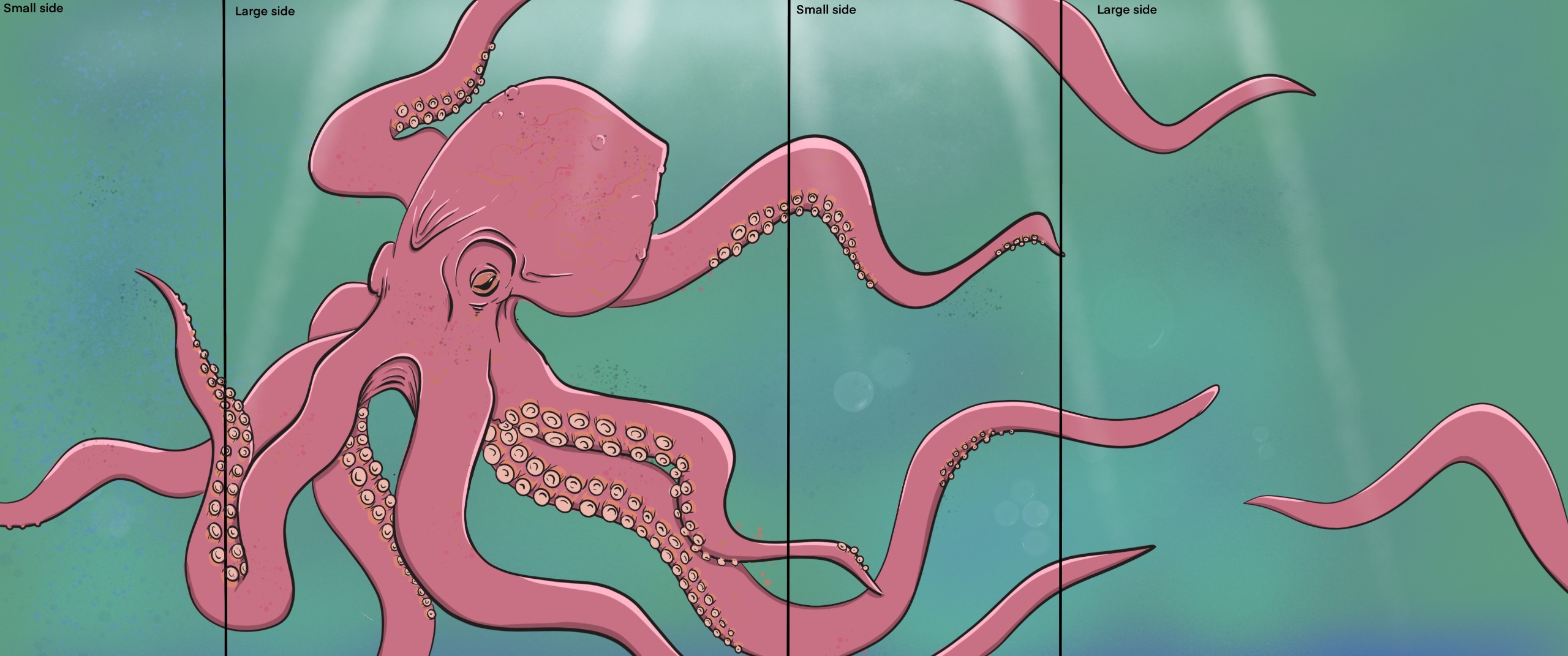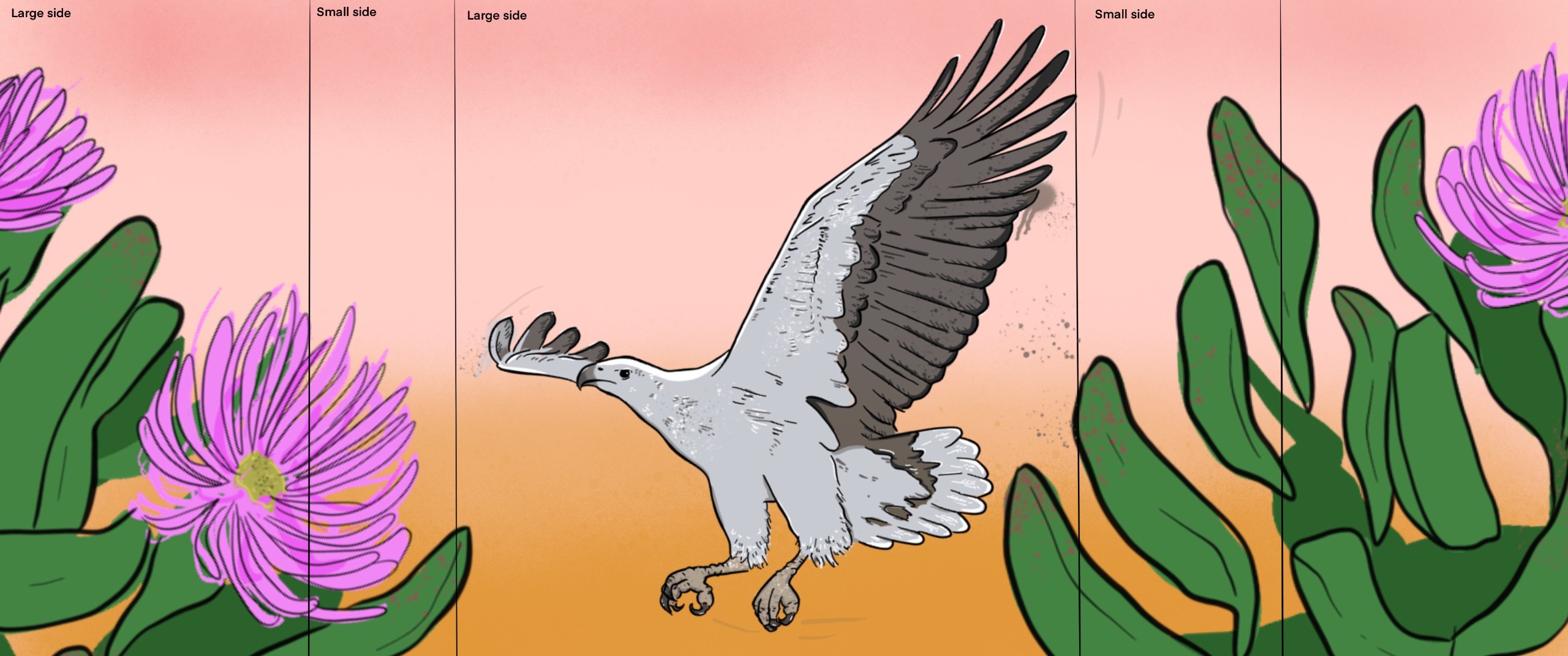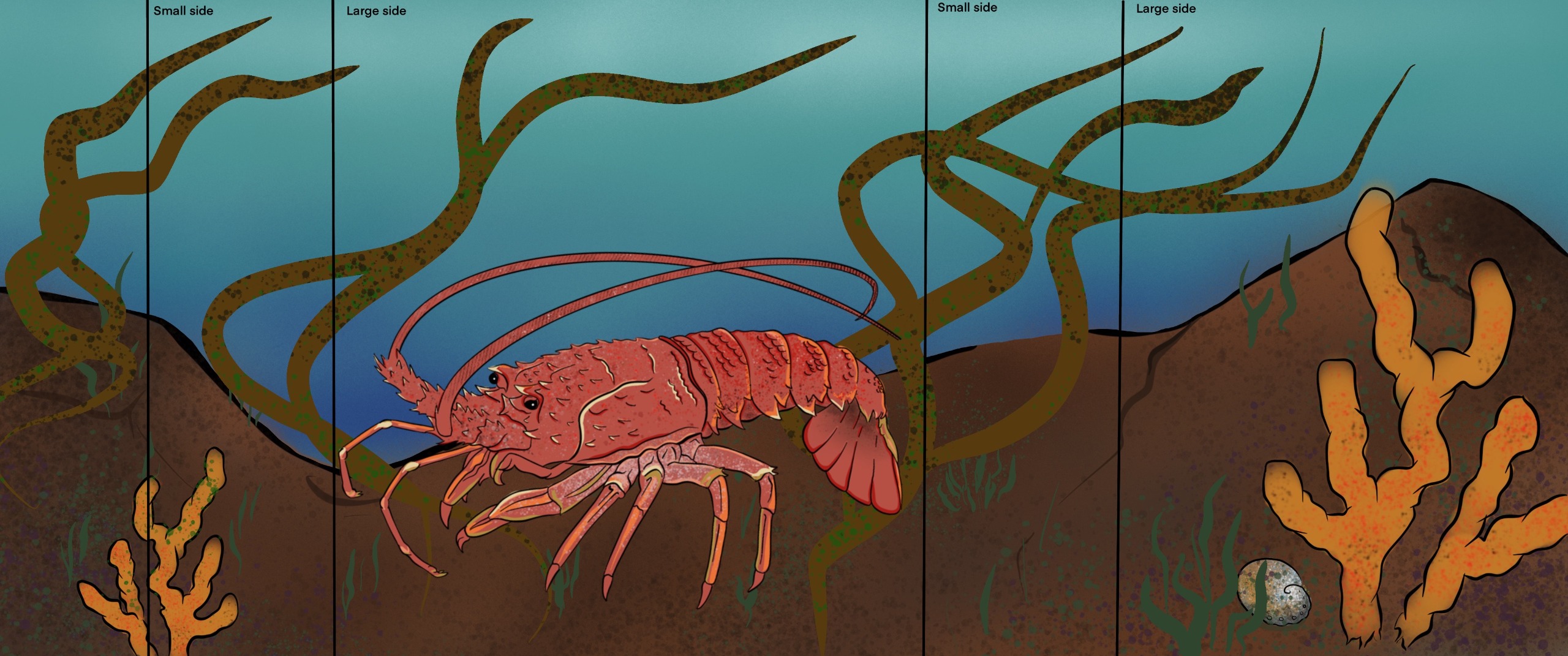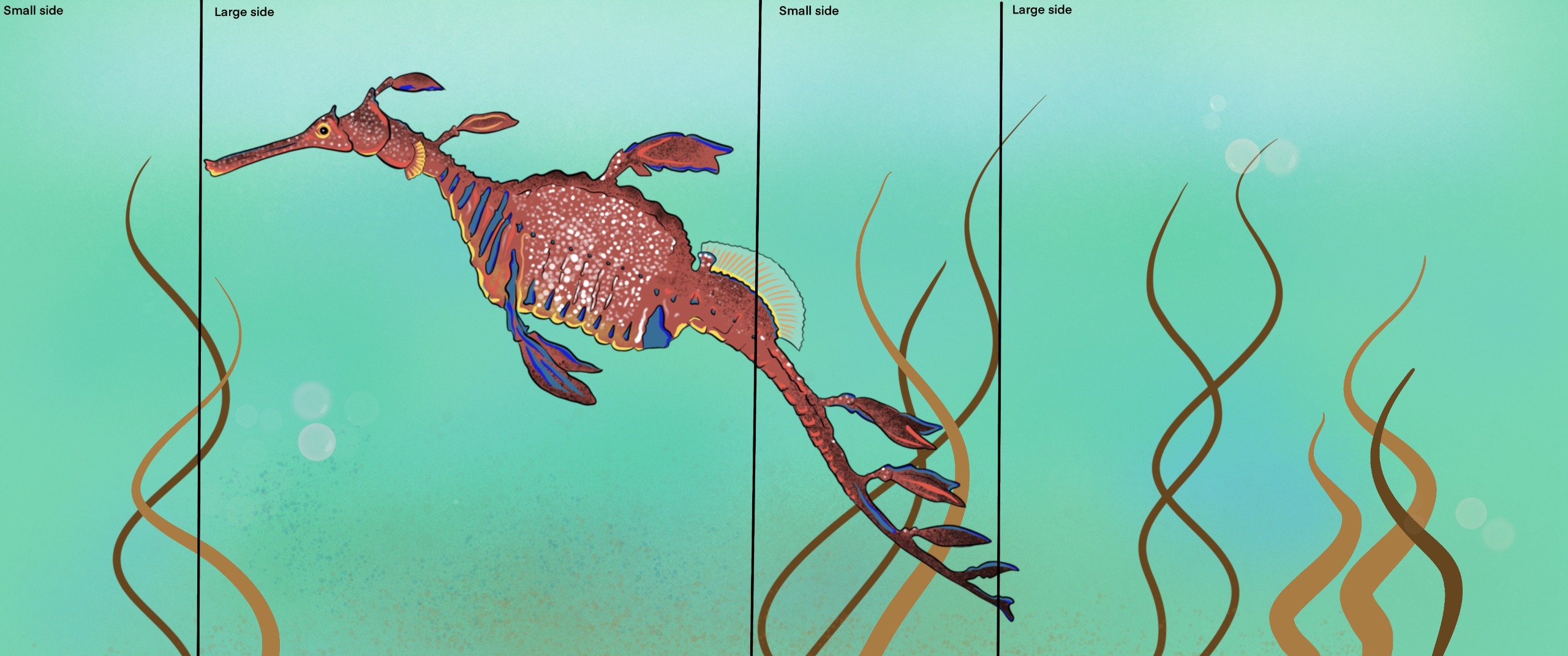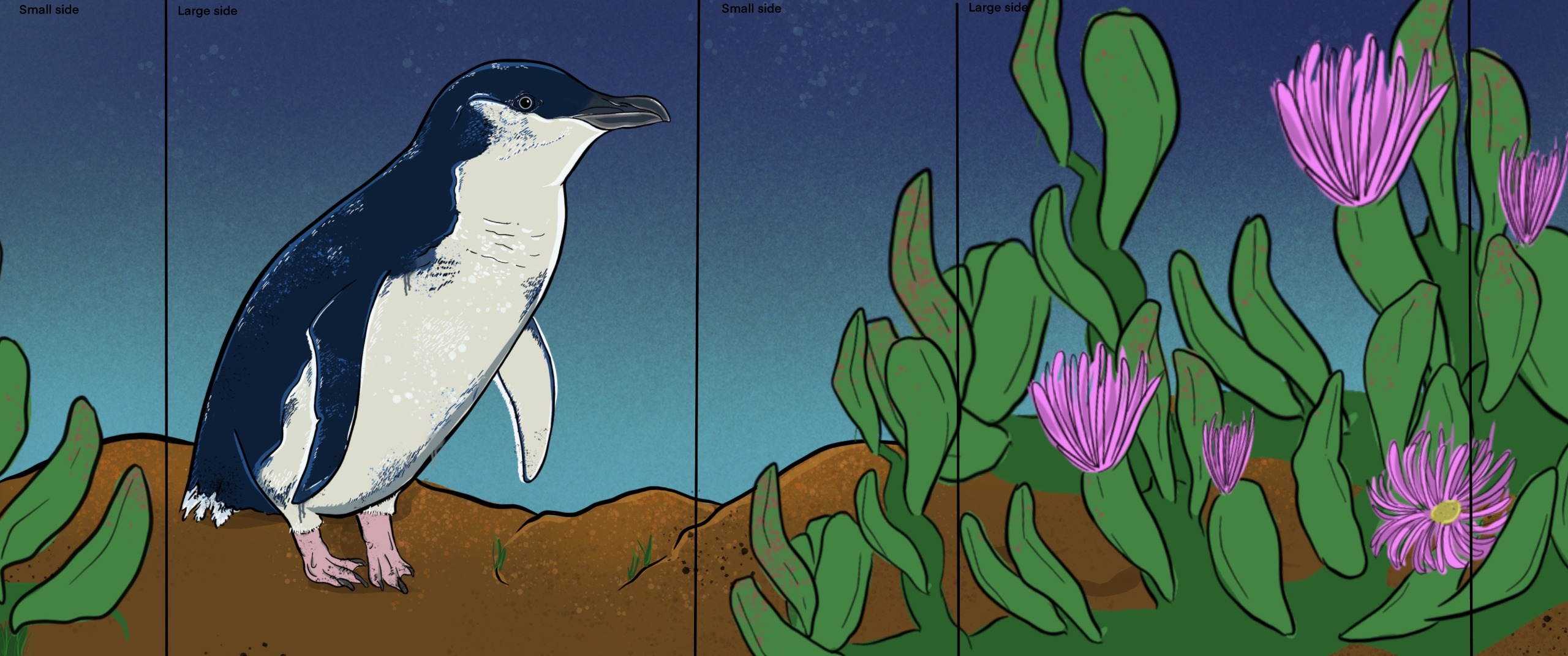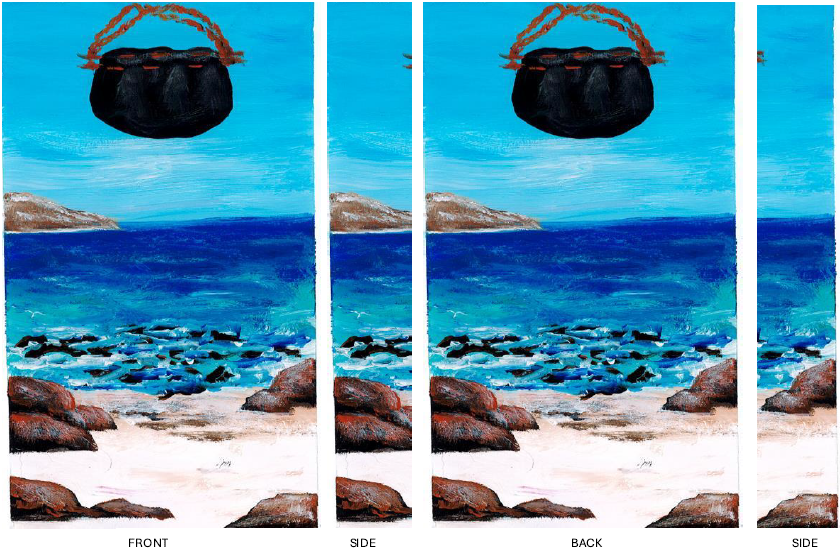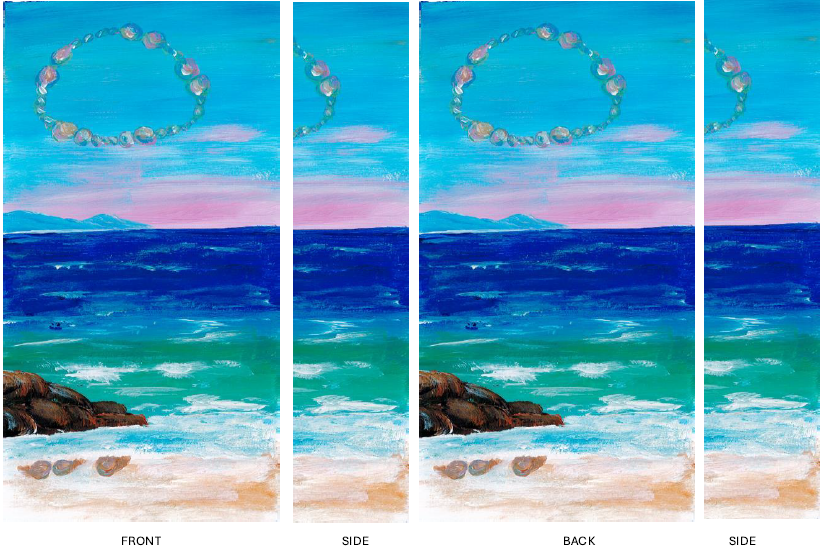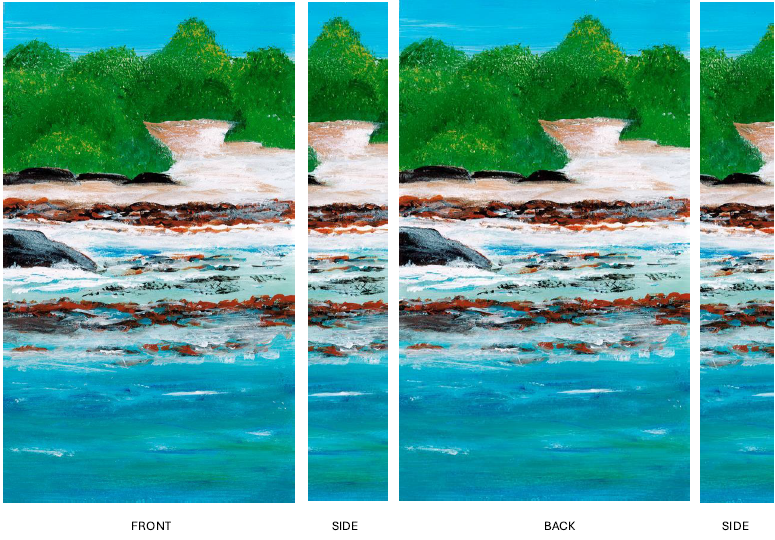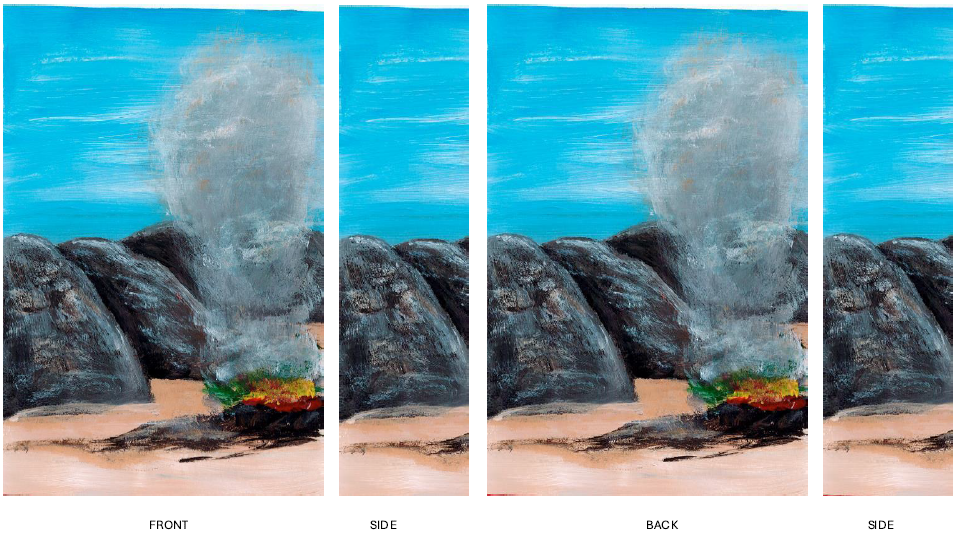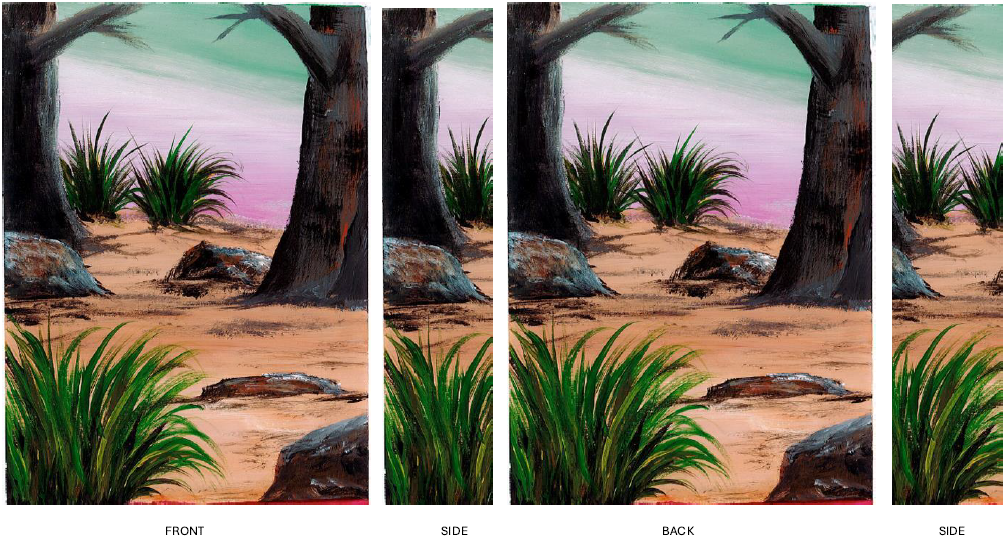Orford and Triabunna
In collaboration with Tasmanian artist Melski McVee, we invited the community to vote on the final set of designs for Orford and Triabunna.
The Orford and Triabunna, East Coast Art Trail locations are:
- Raspins Beach, Orford
- The Hedge, Orford
- Wade Bridge, Orford
- West Shelly, Orford
- Charles St, Triabunna
- Esplanade, Triabunna
These artworks take cues from the native birdlife and flora found along the coast, combining them with abstracted elements that speak to the rhythms and patterns of coastal living.
Recognisable features are pared back and reimagined, creating a balance between the familiar and the interpretive.
Through the use of bold colour, flowing forms and fine detail, the work captures the movement and shifting energy of the shoreline.
It’s not just a depiction of place, but a reflection on how we experience it - through memory, sensation and story. The result is a layered, expressive piece that invites connection and curiosity.
Community Chosen Designs
Bicheno and Swansea
In collaboration with Tasmanian artist Mel Fidler, we invited the community to vote on the final set of designs for Bicheno and Swansea.
The Bicheno and Swansea East Coast Art Trail locations are:
- Jetty Road, Swansea
- Esplanade, Swansea
- Waubs Esplanade, Bicheno
- Burgess St, Bicheno
- Redbill, Bicheno
Artwork Details
My designs are a blend of locally found native fauna and fauna with a quintessential Tasmanian theme underlining all the works. Each selected motif has been suggested by locals and visitors alike, highlighting what we deem unique, important and iconic when considering our popular coastal locations, whilst also commenting on the wider community’s connections to these landscapes (and animal inhabitants) that we all know and love.
Community Chosen Designs - Design Set 1
Jetty Road, Swansea
Octopus - Swansea has a strong maritime and culinary history, the octopus is a standout creature found in these east coast waters. Often seen stealing from cray pots, mesmerising divers, or ending up pickled on a seafood platter. Regardless of how we view this creature we can all agree that they are an incredibly intelligent and unique local marine animal.
Esplanade, Swansea
Eagle - White bellied Sea Eagles are mighty raptors ruling our waterways. They can measure up to 90cm with a wingspan of up to 2.2 meters and I can nearly guarantee are better at fishing than most people. Patrolling the coast and hinterlands with such ease. An important apex predator whose presence can be felt, gliding high above the waterway at the Swansea Duck Park.
Waubs Esplanade, Bicheno
Lobster Reef - Here I have depicted a southern rock lobster, an iconic creature for Bicheno. This Cray is immersed in a familiar Bicheno reef-scape, with abalone, soft corrals, and kelp.
Burgess St, Bicheno
Weedy Sea Dragon - Temperate waters and soft corrals makes Bicheno on Tasmania’s East Coast a diving hot spot. Along with Eagle Rays, Draft board sharks and Boar fish this area is also home to the stunning and otherworldly Weedy Sea Dragon. I’ve been lucky enough to see one of these creatures in the wild and the amazement still lingers. This artwork is located very near to that Sea Dragons home.
Redbill, Bicheno
Little Penguin Solo - From dawn to dusk little penguins are out fishing at sea, returning as the sun sets to their burrows on the Bicheno shoreline. This penguin is surrounded by pig face a prominent native succulent often obscured their burrow entrances.
Community Chosen Designs
St Helens and Scamander
In collaboration with Tasmanian artist Judith-Rose Thomas, we invited the community to vote on the final set of designs for St Helens and Scamander.
The St Helens and Scamander East Coast Art Trail locations are:
- Scamander Ave, Scamander
- Dune, St Scamander
- Lagoon Esplanade, Scamander
- Kirwans Beach, St Helens
- Jason Street, St Helens
- Marina Parade, St Helens
Community Chosen Designs - Design Set 1
Scamander Ave, Scamander.
Tasmanian Aboriginal clans used bull kelp to make water carriers. They would carry them full of water for quite some distances when they moved from one hunting ground to another. The kelp comes from the sea and washes up on the beach where Aboriginal women wash and clean the kelp to make the carriers.
Dune St, Scamander.
Shelly Beach is a special place where mairreener shells can be collected. Mairreeners, black crows and penguin shells are special in Aboriginal jewellery making. Tasmanian Aboriginal women collect the shells from the beach and boil them in water to remove the shellfish. Women prepared the shells with a sharp kangaroo or fish bone to make a hole to thread onto beautiful shell necklaces. Today’s Aboriginal women follow the same practices and use a needle to pierce the shells. Where shells were once threaded on to sinews, they are now threaded on to cotton or fish line.
Lagoon Esplanade, Scamander.
Seaweed offers a range of health benefits due to its rich nutrient profile, benefiting heart and gut health. Tasmanian Aboriginal clans used the abundant seaweed as a food source and to build shelters.
Kirwans Beach, St Helens.
Peppermint gum leaves are used in Aboriginal smoking ceremonies. Smoke from the peppermint gum is medicinal. With anti-bacterial and anti-fungal properties, it was used by the Tasmanian Aboriginal people when people were sick. It has a strong and calming scent.
Jason St, St Helens.
Saggs (lomandra) is a popular landscape plant that often gets overlooked as a bush food. The young white shoots can be eaten raw and taste a bit nutty. Tied up, these were also baked by the Tasmanian Aboriginal people. Children would use the reeds as paint brushes.
Marina Parade, St Helens.
These tree roots are being burnt to make waddies. Tasmanian Aboriginal men would pull the burnt roots from the ground with their long digging sticks. They used their tools to shape the roots into a hunting tool. Only spears, rocks and waddies were used for hunting.

